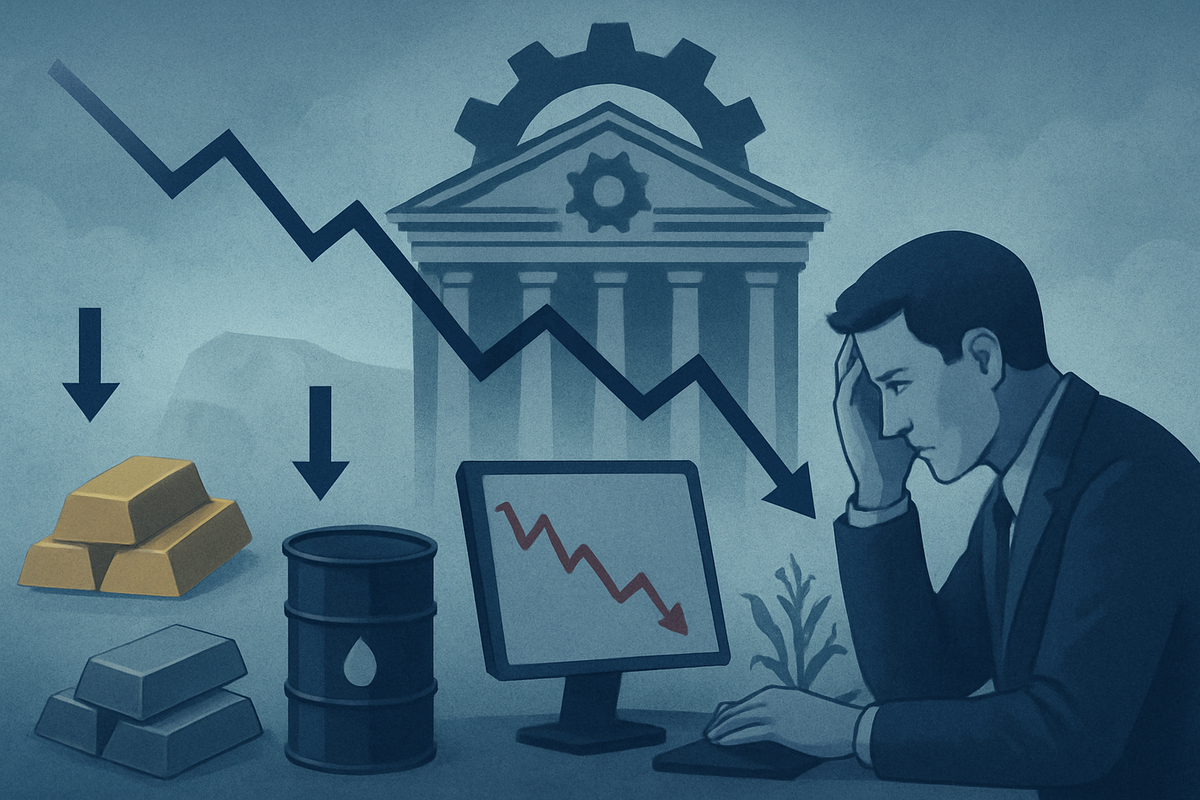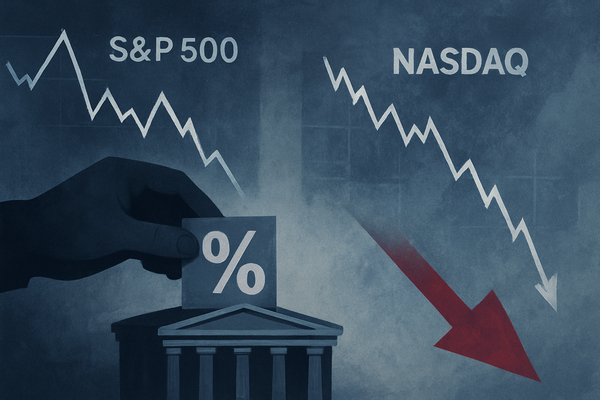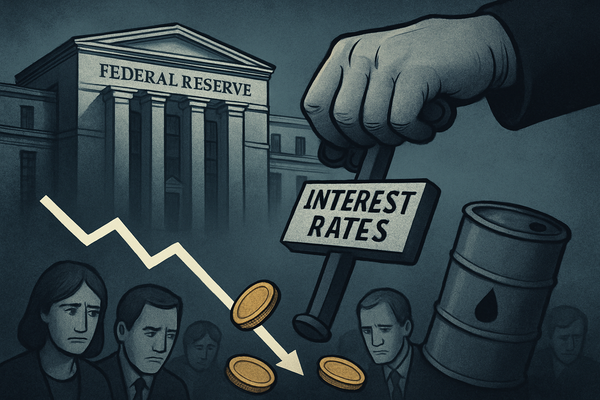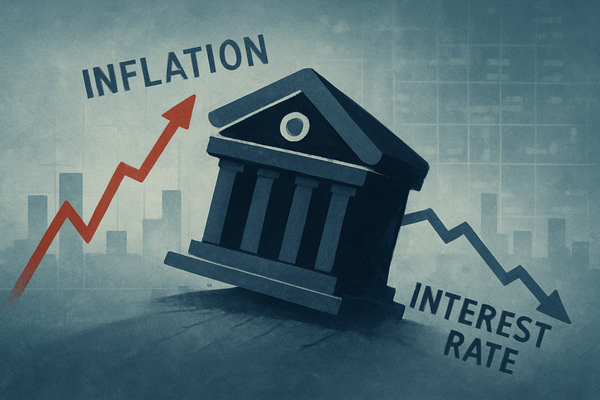Federal Reserve's Hawkish Stance Chills Investor Optimism, Sends Commodity Prices Tumbling

November 14, 2025 – The financial markets are experiencing a significant tremor as the Federal Reserve's increasingly hawkish signals have dramatically dampened investor optimism, leading to a broad recalibration and sharp decline in commodity prices across various sectors. Driven by persistent inflation concerns and a surprisingly resilient U.S. economy, the Fed's rhetoric has largely extinguished expectations for immediate interest rate cuts, creating a challenging and uncertain environment for global markets.
This shift in monetary policy expectations has triggered a widespread risk-off sentiment, with investors pulling back from riskier assets and re-evaluating their positions. The prospect of "higher for longer" interest rates is now firmly embedded in market psychology, impacting everything from equity valuations to the cost of raw materials, and forcing companies and consumers alike to brace for a potentially prolonged period of tighter financial conditions.
The Fed's Unwavering Resolve: A Hawkish November
The Federal Reserve's recent pivot towards a more aggressive stance has been a defining feature of mid-November 2025, largely fueled by a collective chorus of hawkish commentary from key officials. Despite a 25 basis point (bp) rate cut in October, which lowered the federal funds rate to 3.75%-4.00%, Chair Jerome Powell's subsequent remarks that a December cut was "not a foregone conclusion" set the tone. This sentiment was amplified by other prominent figures, including Minneapolis Fed President Neel Kashkari, St. Louis Fed President Alberto Musalem, Cleveland Fed President Beth Hammack, Atlanta Fed President Raphael Bostic, Kansas City Fed President Jeff Schmid, and Boston Fed President Susan Collins, all of whom voiced strong reservations about a premature easing of monetary policy.
The timeline leading up to this moment saw market probabilities for a December rate cut plummet from approximately 95% a month prior to a mere 48-53% by November 13-14, 2025. This dramatic shift underscores the market's rapid absorption of the Fed's firm resolve to combat inflation. While the Fed is set to conclude the reduction of its aggregate securities holdings (Quantitative Tightening or QT) on December 1, 2025, the overall policy remains a "hawkish cut," characterized by robust breakevens and elevated real yields, suggesting persistent inflation and a higher neutral interest rate. Further complicating the Fed's decision-making was a recent 43-day U.S. government shutdown, which delayed crucial economic data, forcing the central bank to operate in a "flying blind" scenario and contributing to its cautious approach. The minutes from the October FOMC meeting are widely anticipated to reinforce this hawkish stance, solidifying the market's current expectations.
Initial market reactions have been swift and broad. Global equity markets experienced a volatile week, with U.S. stocks seeing earlier gains evaporate. The S&P 500 has slipped, and some analysts are even predicting a potential 10% market correction. U.S. Treasury yields have risen, with the benchmark 10-year U.S. Treasury note hovering around 4.13%, as expectations for imminent rate cuts receded. The U.S. dollar has strengthened, recovering from earlier lows, making dollar-denominated assets and commodities more expensive for international buyers. Even cryptocurrencies, such as Bitcoin (BTC-USD), have felt the pinch, falling over 20% from their October high, largely attributed to the diminished prospects of Fed rate cuts.
Corporate Fortunes in the Crosshairs: Winners and Losers
The Federal Reserve's hawkish stance is creating a distinct divergence in corporate fortunes, with companies tied to commodity production and those heavily reliant on borrowing costs facing significant headwinds. The "higher for longer" interest rate environment and a strengthening U.S. dollar are reshaping profitability across various sectors.
Potential Losers:
- Gold and Silver Miners: Companies like Barrick Gold (NYSE: GOLD) and Newmont Corporation (NYSE: NEM) are likely to face significant pressure as gold and silver prices tumble. Higher interest rates increase the opportunity cost of holding non-yielding precious metals, reducing demand and subsequently impacting the revenues and profit margins of mining operations. The sharp decline in prices directly erodes the value of their primary product.
- Industrial Metal Producers: Firms involved in the extraction and processing of industrial metals such as copper, zinc, and aluminum, including companies like Freeport-McMoRan (NYSE: FCX) for copper, will feel the squeeze. Weak industrial output data from China, coupled with a stronger dollar and global economic slowdown concerns, translate to reduced demand and lower prices for these essential materials, impacting their top and bottom lines.
- Agricultural Commodity Exporters: U.S. agricultural giants like Archer-Daniels-Midland (NYSE: ADM) and Bunge Global SA (NYSE: BG) could see reduced competitiveness in international markets. A stronger U.S. dollar makes U.S. agricultural exports more expensive for foreign buyers, potentially leading to decreased sales volumes and tighter profit margins, especially amidst abundant global supplies and projected record harvests for grains.
- Energy Companies (Long-Term): While crude oil prices have shown some resilience due to geopolitical factors, the broader trend of a stronger dollar and potential global economic slowdown could eventually dampen demand. Companies like ExxonMobil (NYSE: XOM) and Chevron (NYSE: CVX), while diversified, could see long-term demand growth curtailed if the hawkish policy leads to a more pronounced global economic deceleration.
Potential Winners (or less negatively impacted):
- Financial Institutions (selectively): Banks that benefit from higher net interest margins due to rising interest rates, such as JPMorgan Chase & Co. (NYSE: JPM) or Bank of America Corp. (NYSE: BAC), could see some upside, provided that loan demand remains robust and credit quality does not deteriorate significantly due to a slowing economy.
- Companies with Strong Balance Sheets and Low Debt: Businesses with minimal debt exposure and robust cash flows will be better positioned to weather the storm of higher borrowing costs, giving them a competitive advantage over more leveraged counterparts.
- Defensive Sectors: Companies in traditionally defensive sectors like consumer staples or utilities, which tend to be less sensitive to economic cycles, might offer relative stability to investors seeking refuge from market volatility.
Wider Significance: A Paradigm Shift in Market Dynamics
The Federal Reserve's hawkish posture is not merely a short-term market fluctuation; it represents a significant paradigm shift in global market dynamics, signaling a prolonged period where monetary policy will prioritize inflation control over growth stimulation. This event fits squarely into a broader trend of central banks worldwide grappling with persistent inflationary pressures that emerged post-pandemic and were exacerbated by geopolitical events. The era of ultra-low interest rates and abundant liquidity appears to be definitively over, ushering in an environment where capital is more expensive and harder to access.
The ripple effects on competitors and partners are substantial. Companies relying on cheap financing for expansion or mergers and acquisitions will find such endeavors more costly, potentially slowing down industry consolidation and innovation. Emerging markets, in particular, face heightened risks as a stronger U.S. dollar typically leads to capital outflows and increased debt servicing costs for dollar-denominated obligations. Regulatory bodies will likely maintain a vigilant watch, with policymakers potentially facing calls for fiscal discipline to complement monetary tightening, especially given the backdrop of the recent U.S. government shutdown. Historically, periods of aggressive monetary tightening have often preceded economic slowdowns or recessions, drawing parallels to the early 1980s when the Fed, under Paul Volcker, dramatically raised rates to quell rampant inflation. While the current economic context differs, the underlying principle of taming inflation at the cost of growth remains a powerful historical precedent.
What Comes Next: Navigating the Uncharted Waters
The path forward for investors and businesses in the wake of the Fed's hawkish signals is fraught with both challenges and opportunities. In the short-term, market volatility is expected to persist as investors continue to digest the implications of "higher for longer" interest rates. Commodity prices, particularly precious and industrial metals, are likely to remain under pressure, while energy prices will continue to be influenced by a complex interplay of demand concerns and geopolitical supply dynamics. Short-term possibilities include further corrections in equity markets, especially for growth stocks that thrived on cheap capital, and a continued strengthening of the U.S. dollar.
Long-term possibilities suggest a re-evaluation of investment strategies, favoring companies with strong fundamentals, robust balance sheets, and sustainable cash flows over highly leveraged or speculative ventures. Strategic pivots will be crucial for businesses; those heavily reliant on borrowing will need to focus on debt reduction and operational efficiency. Market opportunities may emerge in defensive sectors, value stocks, and potentially in commodities that become undervalued if the market overreacts. Challenges include increased financing costs, potential demand destruction from a slowing global economy, and navigating a less predictable policy environment due to factors like delayed economic data from government shutdowns. Potential scenarios range from a "soft landing" where inflation is tamed without a severe recession, to a more challenging "hard landing" marked by a significant economic downturn. Investors should closely monitor upcoming inflation reports, labor market data, and, crucially, the tone of future Federal Reserve communications for any shifts in policy trajectory.
A New Era of Fiscal Prudence and Market Resilience
In summary, the Federal Reserve's hawkish signals around November 14, 2025, have marked a definitive turning point for financial markets. The central bank's unwavering commitment to combating inflation, even at the expense of dampening investor optimism and commodity prices, underscores a new era of monetary policy. Key takeaways include the widespread decline in precious and industrial metal prices, the strengthening of the U.S. dollar, and increased volatility across equity and cryptocurrency markets. The market moving forward will likely be characterized by higher interest rates, more expensive capital, and a greater emphasis on fiscal prudence from both corporations and governments.
The lasting impact of this event will be a re-anchoring of inflation expectations and a re-evaluation of risk across asset classes. Investors should watch for continued pronouncements from Fed officials, upcoming economic data releases (especially inflation and employment figures), and the market's reaction to the conclusion of the Fed's Quantitative Tightening program in December. The ability of the global economy to absorb these tighter financial conditions without succumbing to a severe downturn will be the ultimate test, defining the market's resilience in the months to come.
This content is intended for informational purposes only and is not financial advice



